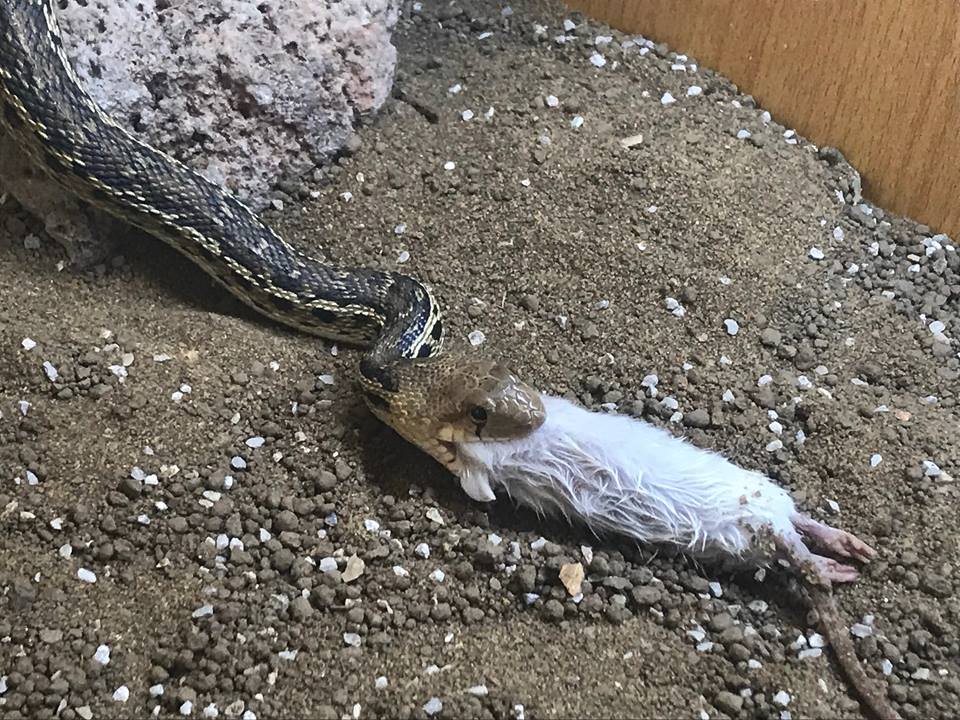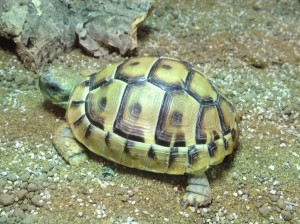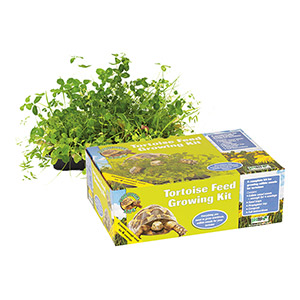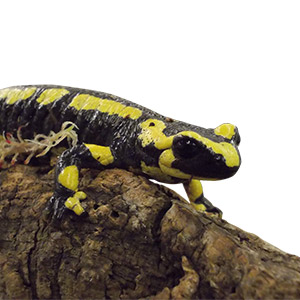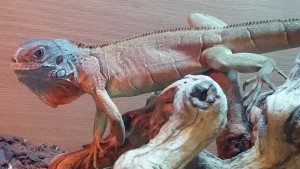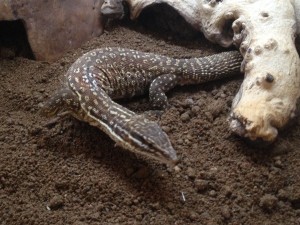Plumed Basilisks (Basiliscus plumifrons) originate from the humid tropical forests of Central America. They are a semi-aquatic species of lizard that love to climb but use the water to escape, either by diving in or running very fast across the surface. They can become tame and make good pets. Adults can reach sizes up to 75 cm, including tail. Adult males can be territorial and should not normally be kept together. Average life span 10-20
Housing
A sealed wooden (Melamine) vivarium with good ventilation and a glass front is the most suitable. Glass can also be used but be aware that these lizards do not always realize that clear glass is a barrier, and many damage their snouts by constant rubbing – live plants or hanging silk pants in front of the glass sides and back can therefore be a good option for this species. The minimum size should be 1200 x 80 x 60cm but the larger the better. All reptiles are cold blooded and need an external heat source to maintain their body temperature. Each species of lizard requires different degrees of heating, but all lizards benefit from a range of temperatures within the vivarium. One end of the vivarium should be heated. This creates a thermal gradient allowing the lizard to choose its preferred temperature. Thermometers can be placed at each end of the vivarium to monitor the temperature range. The overall vivarium temperature must be controlled by a thermostat. Lower temperatures due to a blown bulb, power failure etc. can be tolerated for short periods but over temperature can kill in quickly. Basilisks like to climb and hang off things and can jump across from branches to heaters so wire mesh guards should be fitted over all hot heat sources used in order to prevent thermal burns.
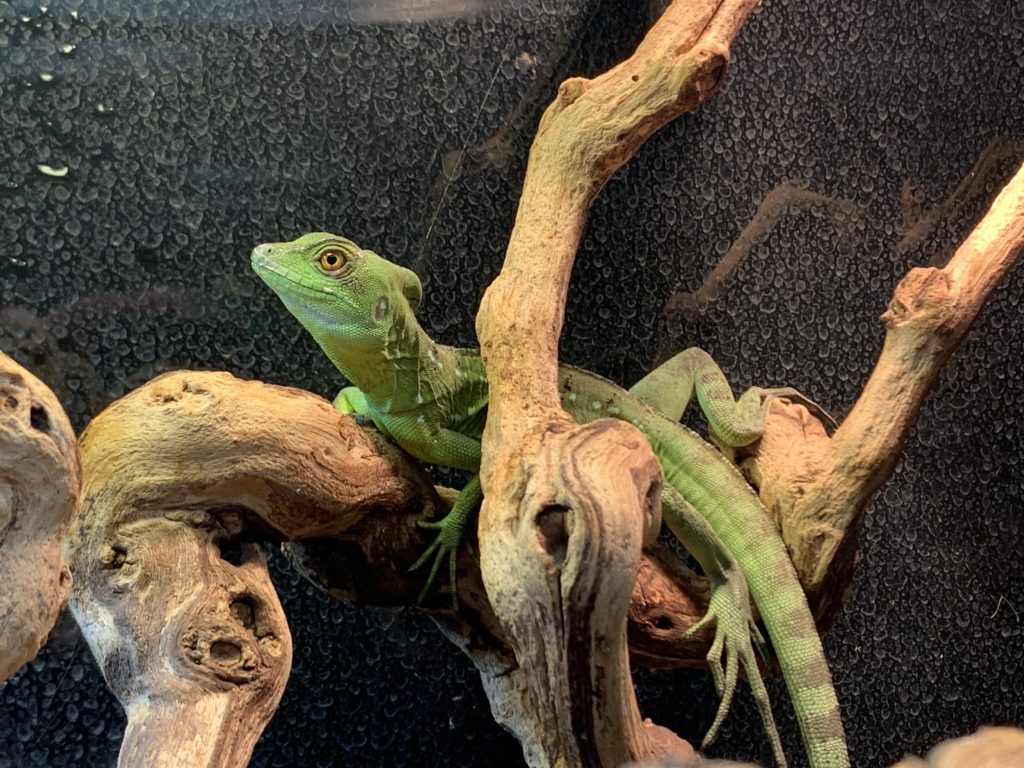
Temperature
Gentle heat can be provided by using heat mats and more intense heat by spot lights or UV heat lamps. Your pet shop will advise on heating products and their use suitable for your green basilisk (another name for the same animal). Create a thermal gradient of 24-25°C at the cool end and 32-35°C at the hot end. Night temperatures can be dropped by a couple of degrees at both ends. There are various ways of achieving this end and different keepers have different methods. The important thing is the actual temperatures. We do it with a heat mat for night time, mounted on the vivarium wall at the hot end with a UVA basking lamp for increased daytime temperatures and natural lighting, using a dimming thermostat.
Lighting
Plumed Basilisks are diurnal lizards and require UVB lighting to fully absorb and utilize the calcium in their diet. This light should be left on for 12- 14 hours in the day. The bulbs will need replacing from time to time and your pet shop will advise you. Different brands and types have different lifespans and just because a tube still lights up does not mean it is still giving out UV. UVB (at around 5-6%) is essential. Without it the basilisk will suffer..Using a UVA basking lamp helps stimulate natural diurnal behaiour and has the added benefit of bringing out the colour of the animal.
Humidity
Plumed Basilisks require a high humidity of 65-85 %. This can be achieved by spraying the vivarium frequently (at least daily) with tepid water, or by installing a waterfall or automatic misting device.Substrate choice will also effect humidity throughout the day.
Furnishings
The floor of the enclosure should be covered with a suitable substrate, such as a mixture of coconut bark and coconut soil or orchid bark (bark chips) to maintain high humidity. As already stated provide a spot light or UV heat lamp for basking. Use branches to create areas to bask in and for climbing and shade. An area to shelter for shade and to prevent stress if your lizard wants to hide away. Plumed Basilisks love to be near water, they use it to escape if threatened in the wild, actually running across the surface, hence to local name of “Jesus Christ lizard” so a large bath should be provided for swimming, or at least for the basilisk to soak its whole body.
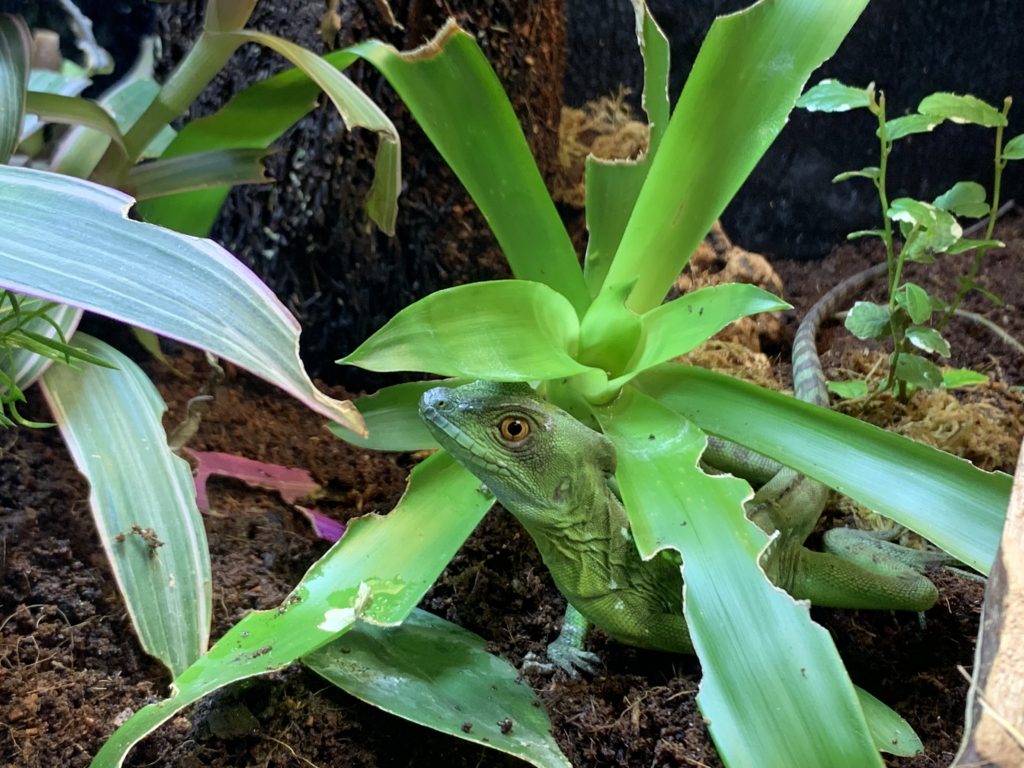
Cleaning and watering
Remove droppings, frequently produced in the bath and dead food daily. Baths, water and food bowls should be washed and cleaned daily. The enclosure is very warm and bacteria will grow rapidly in dirty water bowls. Vivariums should be completely cleaned out and disinfected with a pet-safe disinfectant regularly. How regularly depends on a lot of factors; substrate choice, whether there are detrivores used or in the case of bioactive set ups perhaps not at all. If not using a live set up then soiled substrate should be disposed of and replaced every couple of months. You can spot clean basilisk poop but I challenge anyone to spot clean cricket or locust poop! Over time this will start to make the vivarium smell if left too long. I don’t like vivarium deodorisers. If it smells then you are not keeping it clean enough.
Feeding
Plumed Basilisks mainly eat live insects, of a size up to the width of their heads, but some will accept fruit and vegetables if offered. In the wild they will also eat fish, small mammals but it is not necessary to feed this in captivity unless you really feel the urge. Remember it is illegal and foolish to feed live vertebrates to another animal in the UK but frozen are available for you to defrost if you simply must. Don’t overdo it though as this can lead to obesity and laziness. Young basilisks should be fed insects once or twice a day with occasional fruit and vegetables. Once growth slows, appetite diminishes substantially. Adults can then be fed 3-4 times a week with more fruit and vegetables offered, if accepted, some just will not. Animal protein can be supplied as crickets, locusts, morio worms and very occasional pinkie mice. Wax worms should be fed sparingly as they have a high fat content. When feeding crickets feed a few at time; if they are eaten readily you can feed a few more. Loose, uneaten crickets annoy and distress them, particularly the black variety. Brown or “silent” rickets are less carnivorous but in large numbers will still nibble. Fruit and vegetables should be washed and dried before being offered in bite size pieces. All food should be dusted with a calcium supplement for fast growing juveniles, and two or three times a week for adults. Vitmain powder should only be used once a week. It is possible to overdose with vitamins (not calcium)
Handling
Plumed basilisks are fairly easily tamed and rarely bite once you’ve put in the work. Young lizards will be quite skittish however, particularly wild caught ones. We only sell captive bred anyway and these are generally much more docile. Movements to pick them up should be smooth, gentle but confident. If you go in with a shaky hand, hesitating and moving around to get the best angle then the basilisk will get nervous and probably clear off or if it can’t then that is the only time it is likely to bite in self defence. Once you have decided how you are going to approach, go in quickly but smoothly. To pick up your lizard place one hand above the shoulders and support the underside fully with the other hand. Keep the basilisk supported at all times, especially when young. It could “take off” at any time.
Health
A healthy Plumed Basilisk should be bright and alert. Its body and legs muscles should appear well-formed and strong. Things to look out for are diarrhoea; this can be caused by incorrect feeding or internal parasite infestation (much more likely in wild caught specimens, another reason to buy captive bred). Nails may become overgrown and will need to be trimmed (we can trim nails for you). Mouth rot: cheesy deposits appear in the mouth. Respiratory problems: signs include fluid or mucus from the nose. Bone disorders: signs include twisted, twitching, swollen or paralysed hind limbs and a soft or undershot jawbone. This is due to a lack of calcium and/or vitamin D3. It can be reversed if caught in time and properly treated. If you are at all worried about the health of your basilisk you should consult a specialist reptile vet as soon as possible. Some reptiles can carry a form of salmonella. Salmonella is most usually contracted by ingestion. Good hygiene and washing hands after handling or cleaning your basilisk should be sufficient to prevent any risk of infection.


